Instructional Series
This site will be closing soon as its content has moved to Tāhūrangi.
2024 titles are available on Tāhūrangi. Use the filters to find specific series.
Find Literacy resources at Tāhūrangi - Literacy.
Welcome to the English medium literacy instructional series teaching and learning resources for years 1 to 8.
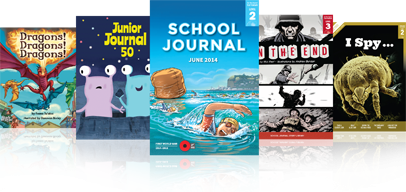
- Gold
- Purple
- 2
- 1
- 3
- 3
- 1
- 2
- English
- Science
- Social Sciences
- Health and Physical Education
- Technology
- The Arts
- Non-fiction
- Fiction
- None
- Articles
- Stories
- Plays
- Poems
Search results
80 items - Showing 71 - 80
-
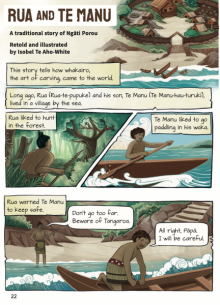
Rua and Te Manu
A traditional story of Ngāti Porou
Retold and illustrated by Isobel Te Aho-White
This story, presented in a graphic text format, tells how Rua journeys under the sea to rescue his son Te Manu, who has been taken by Tangaroa. In the undersea world, Rua discovers beautiful whakairo (carvings) on the whare of Tangaroa and, after defeating the sea god, brings the art of whakairo to the world above the sea. Ideas about whakairo are explored further in the article “Kākahu Pekepeke” in this journal.
Information and tips for using comics in the classroom:
-
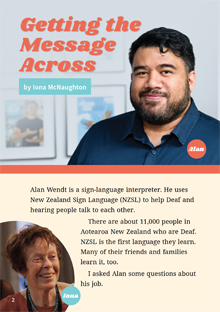
Getting the Message Across
by Iona McNaughton
In this interview, Iona McNaughton talks to Alan Wendt, a New Zealand Sign Language interpreter. Alan explains why he chose to become an interpreter and describes what his job involves. “Getting the Message Across” is one of several pieces in this journal on the theme of communication.
Gold 1
-
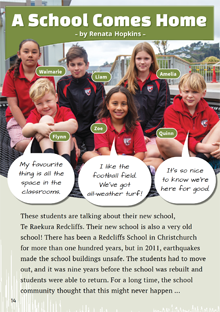
A School Comes Home
by Renata Hopkins
This recount describes a campaign by Redcliffs School and its local community to save their school after it was closed because of damage from the 2011 Christchurch earthquakes. “A School Comes Home” includes comments from past and present students and a timeline of events.
Gold 2
-
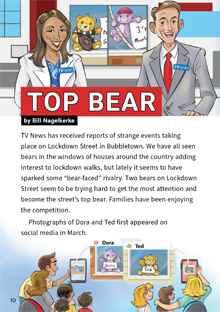
Top Bear
by Bill Nagelkerke
This lighthearted, humorous story is set during the time of the March–April 2020 COVID-19 lockdown. It describes the antics of two bears who appear to be competing to become the most popular bear in Lockdown Street. The story is told in the form of a television news report and includes social media posts and many entertaining word plays. It ends with a series of questions that invite readers to speculate about what might be behind the bears’ antics.
Gold 1
-
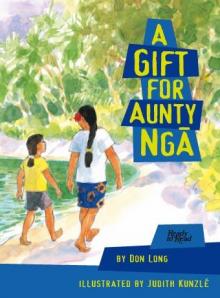
A Gift for Aunty Ngā
by Don Long
illustrated by Judith Kunzlé
In this sequel to A Quilt for Kiri (Purple), Kiri visits Rarotonga with her parents to meet Aunty Ngā and gives her a tīvaevae that she and her mother have made. This is a rich personal-experience narrative with many layers of meaning, which lends itself to expressive reading and can be returned to many times. These notes include background information about tīvaevae and some aspects of Cook Islands culture.
Gold 1
-

Blue Eggs
by John Dekker
This report describes the life cycle of a song thrush, how the song thrush came to New Zealand, and why some people consider this bird to be a problem.
This text provides opportunities for students to find and summarise information and to consider different points of view.Gold 1
-
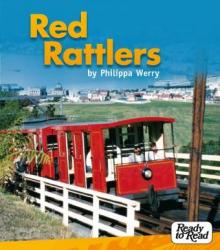
Red Rattlers
by Philippa Werry
This report describes the old Wellington cable cars and compares them with the current cable cars.
It includes an explanation, supported by photographs and diagrams, of the technology behind how the
old cable cars worked. The text concludes with an interview with a present-day cable car driver.Gold 2
-
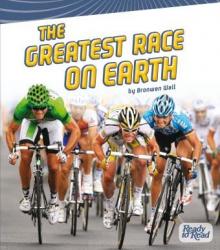
The Greatest Race on Earth
by Bronwen Wall
This report describes why the author considers the Tour de France to be “the greatest race on Earth”. Text boxes provide information about how the race was established. This text has strong connections to students’ experiences of, or knowledge about, sports and competition. It links particularly well to the Ready to Read text Tom’s Tryathlon (Purple).
Gold 2
-
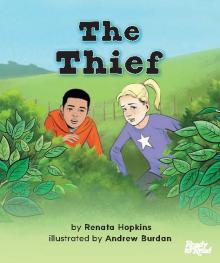
The Thief
Written by Renata Hopkins
illustrated by Andrew Burdan
In this lively mystery story, Sophie’s treasure has gone missing. Sophie and her cousin Manu make a plan to catch the thief – though students will discover that there is more than one “thief” in this story.
The Thief has a series of short chapters, giving students an opportunity to develop reading “stamina” on a longer story and to carry ideas across longer sections of text.
Gold 1
-
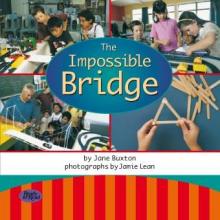
The Impossible Bridge
by Jane Buxton
photographs by Jamie Lean
This text describes a group of children’s attempts to build models of bridges. It incorporates a range of text forms: a recount written in diary form, “engineers’ reports”, and instructions. There is a Māori version, Te Piriti Mutunga Kore, in the Kawenga Kōrero series (item 22998).
Gold 2


 Literacy Online home
Literacy Online home
